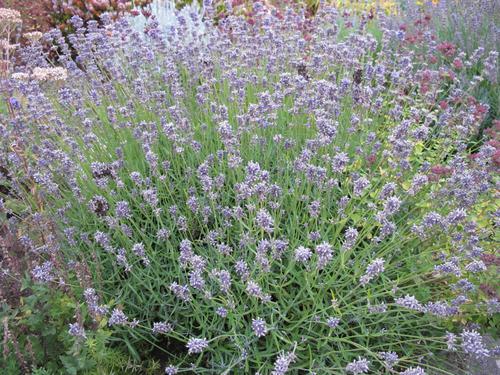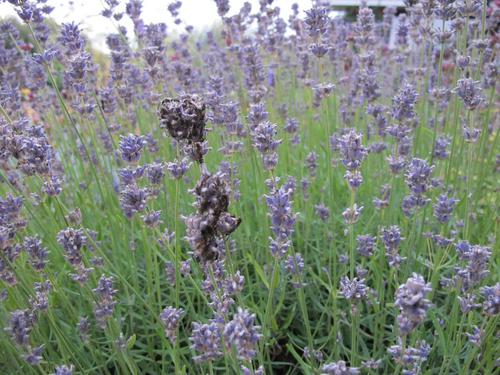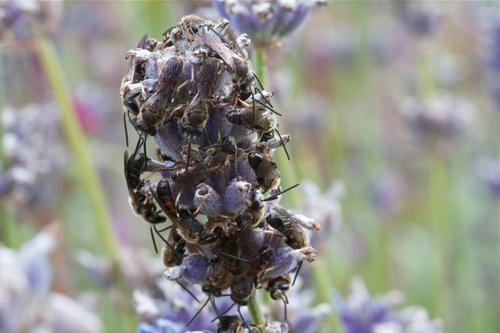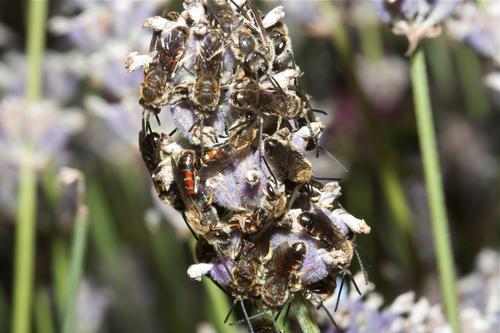Observations on solitary bees in a garden at Astley Burf
Jane Scott
On the evening of 8th August 2011 I noticed several clusters of solitary bees apparently ‘roosting’ on flower heads of one of the lavenders growing alongside the path leading to my front door. They were still in the same position the next morning and only flew off after the sun reached the particular bush. They returned almost to the same flower heads that evening and continued to do so for a number of weeks thereafter. A quick count revealed 90–100 individuals, most of which were tightly packed together on 5-6 flower heads, with a few on one or two other stems but always on the same bush.
I mentioned this to Geoff Trevis on 13th August and he kindly offered to identify them for me. I provided him with two individuals from the same flower head and surprisingly these turned out to be two separate species, Lasioglossum albipes and Lasioglossum calceatum, both determinations being based on the genital capsules. He confirmed that both were males and that only the males were known to cluster in this way.
Seeing them regularly enabled me to make some interesting observations of their behaviour. They spent a considerable amount of time self grooming, both prior to flying off, which they did as soon as the sun struck them and they warmed up, and also on returning to roost in late afternoon or evening, depending on weather conditions. On dull cool days they remained all day and didn’t even move when torrential rain (13mm) fell on 25th August. A quick count the next morning revealed about 80 individuals, 10 of these having moved to an adjacent lavender.
On 29th August I counted approximately 76 but then I noticed a cluster of 14 on a lavender further around the house but still facing south. Numbers fluctuated slightly and by 6th September had dropped to 50 on the original plant and 15 at the new site. On 12th, numbers had dropped to 35 and 8 respectively and despite the sun; many remained all day as the wind was quite strong and gusty.
At 6.30pm on 14th September, after a warm day with sunny spells, only seven returned to the original bush with four on the other. On 16th I was unable to find any bees and despite checking for the next few days, no further individuals were seen.
Although I was not able to prove where the bees spent their time when away from the ‘roost’, I did notice that there were similar looking bees nectaring on various flowers in the garden, particularly Rudbeckia and also on the small daisy, Erigeron karvinskianus. No obvious nest colony was found in the garden but I do regularly notice small holes within the cultivated garden and in the wilder areas on bare sandy places, which are likely to be solitary bee or wasp holes. It will be very interesting to see if this behaviour is repeated next year or whether this was a ‘one off’ event.
Images
Fig. 1. Lasioglossum roost on lavender at Astley Burf. ©Jane Scott
Fig. 2. Lasioglossum roost on lavender at Astley Burf. ©Jane Scott
Fig. 3. Lasioglossum roost on lavender at Astley Burf. ©Jane Scott
Fig. 4. Lasioglossum roost on lavender at Astley Burf. ©Jane Scott



